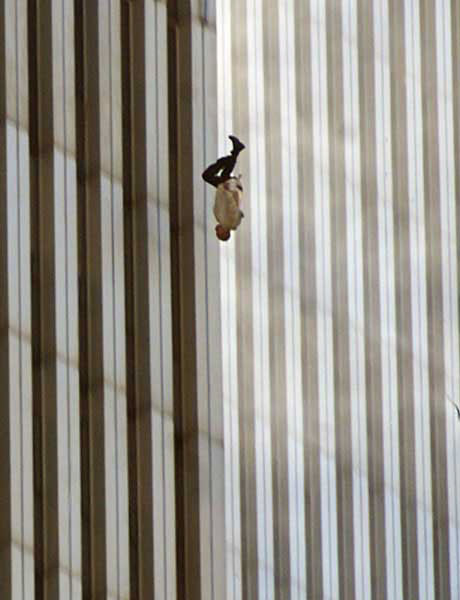It could be one of the most famous photographs ever, The Falling Man by Richard Drew, a longtime Associated Press photog who was one of four press photographers present at the assassination of Robert F. Kennedy in 1968. Drews famous 9/11 photo depicts a man falling from the World Trade Center towers following the September 11, 2001 attacks. Yet, people in the United States have gone to great lengths to banish it from public consciousness. How come? A photo that depicts our most intimate connection to the horror of that day?

The Falling Man is one of these photographs considered to be too powerful for average consumption. Instead of letting us reflect on the events of that day some opinion makers try to banish from record what reminds us of that day’s sorrow and pain. It’s still not clear to this day who the man falling down World Trade Center and tumbling through the air actually was. But without photographic reminders such as this one even the greatest tragedy becomes something distant and theoretical.
It’s in no way a perfect photograph. Yet it is perfect. It’s blurred, colors are off and framing is arbitrary. Yet it captures so much more than what’s obvious and meets the eye. Once we turn a blind eye to the deeper emotions underlying events such as 9/11 we become robots and soldiers that march to any tune.
Death was inevitable, yet the falling man and other jumpers might be called suicidal by some. Esquire dedicates an in-depth feature on The Falling Man, concluding with:
At fifteen seconds after 9:41 a.m., on September 11, 2001, a photographer named Richard Drew took a picture of a man falling through the sky — falling through time as well as through space. The picture went all around the world, and then disappeared, as if we willed it away. One of the most famous photographs in human history became an unmarked grave, and the man buried inside its frame — The Falling Man — became the Unknown Soldier in a war whose end we have not yet seen. Richard Drew’s photograph is all we know of him, and yet all we know of him becomes a measure of what we know of ourselves. The picture is his cenotaph, and like the monuments dedicated to the memory of unknown soldiers everywhere, it asks that we look at it, and make one simple acknowledgment.
That we have known who The Falling Man is all along.
Great, important read. About a photograph. In the end it doesn’t matter who The Falling Man was. He could be anyone. The photograph, reminding us of what happened, matters.


